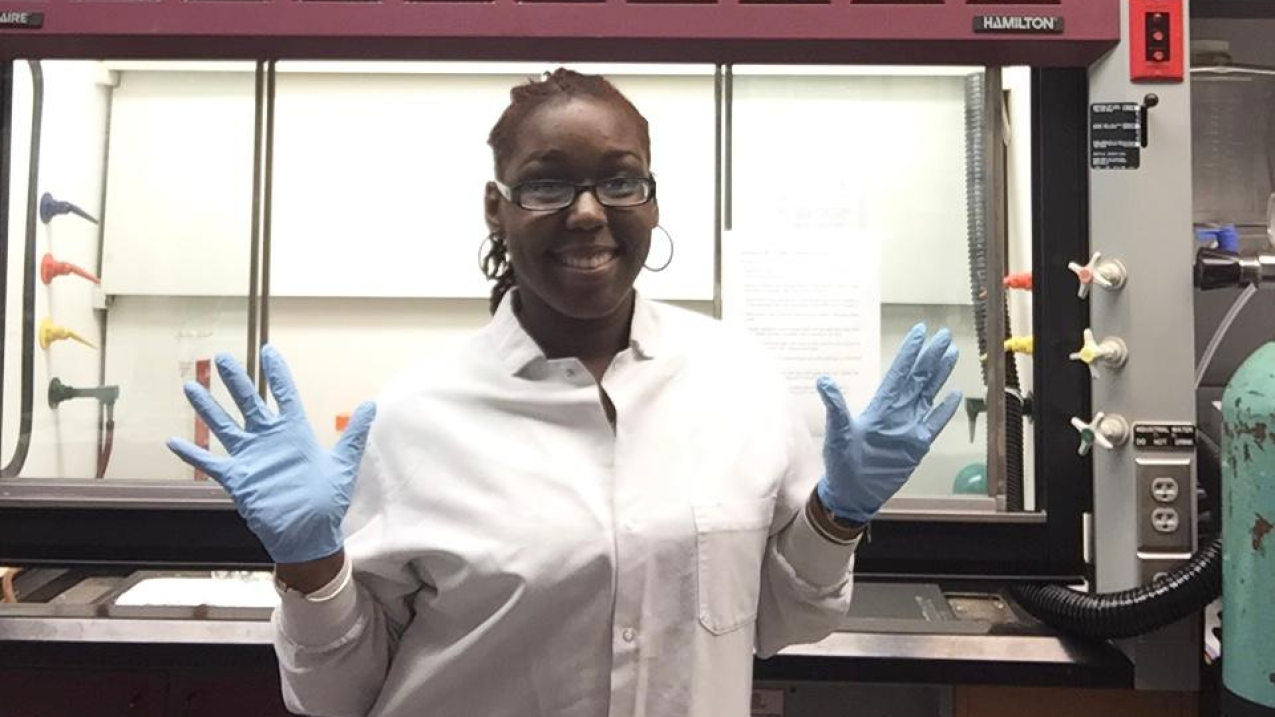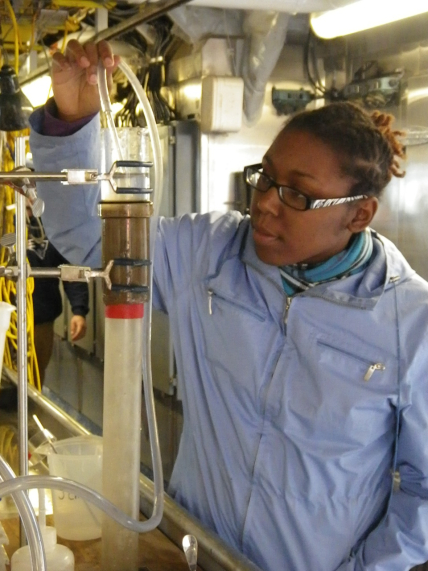The NOAA EPP/MSI program recently welcomed their newest team member, Shareena Cannonier, Ph.D. Shareena has a long history with the EPP/MSI program, first as a 2012 EPP/MSI undergraduate scholar and then as a graduate fellow at the EPP/MSI NOAA Environmental Cooperative Science Center. Following her 2019 graduation with a Ph.D. in environmental science from Florida A&M University offsite link, Shareena worked at the U.S. Environmental Protection Agency (EPA) in the Atlantic Coastal Environmental Science Division’s Safety, Health, and Environmental Management Programs.

Shareena Cannonier, EPP/MSI graduate fellow, stands in the School of the Environment Lab at Florida A&M University. (Image credit: Courtesy of Shareena Cannonier)
Below, Shareena shares what led her to study environmental science, the role the EPP/MSI programs played in her career, and her new position with the EPP/MSI team.
How did you become interested in environmental science?
My parents are both supporters and advocates of the natural environment, so my interest to pursue a degree in environmental science came from our everyday interactions, growing up in the Caribbean.
Deciding whether to attend graduate school is often a big question for undergraduates — how did you decide to pursue a Ph.D.?
The encouragement from my undergraduate advisor at Lincoln University is the reason that I decided to pursue my Ph.D. He saw my aptitude, and challenged me to think about what I wanted to pursue as a career. He mentored me and opened the doors of opportunities for my success. Communicating with my siblings who were already obtaining advanced degrees and hearing their excitement made my decision easier to pursue a Ph.D.
Did the EPP/MSI Undergraduate Scholarship Program impact what you decided to study for your Ph.D.?
EPP/MSI impacted the topic that I chose to do my research on and ultimately the university that I attended to obtain my Ph.D. As an EPP/MSI undergraduate scholar, my first internship was in the National Centers for Coastal Ocean Science. I created outcome reports for research projects specifically on harmful algal blooms. Learning that harmful algal blooms were a global issue and its impact on people in the Caribbean made me excited to continue my studies on the topic and to contribute to the field in graduate school.
A program manager with the NOAA EPP/MSI Cooperative Science Centers guided me on to the opportunities available at the centers. I applied and was accepted into the Ph.D. program in Environmental Science at Florida A&M University. As a Ph.D. student I was supported through the NOAA Environmental Cooperative Science Center and conducted research on a passive sampling technique called Solid Phase Adsorption Toxin Tracking to assess harmful algal bloom toxins within estuaries in the Gulf of Mexico.

Why did you decide to work at a government agency, the EPA, following your Ph.D.?
As I maneuvered through various work environments, I realized that most of the decision making and changes to environmental issues occurred at the administrative level. Therefore, when the opportunity came at EPA, I decided to apply.
What do you look forward to the most in your new position with the EPP/MSI team?
I am looking forward to interacting with and impacting the next generation of scholars who will go on to do great things, not only in NOAA, but in the broader STEM fields. I am also looking forward to bringing new ideas, insights and overall contributing to make EPP/MSI the best it can possibly be. I am really excited to be back at NOAA as a member of the EPP/MSI team!



